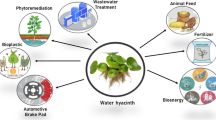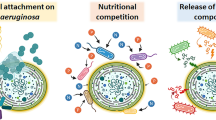Abstract
The brown seaweeds, Sargassum fusiforme and Sargassum fulvellum are edible and highly valued in Korea. During the summer season, phytal animals graze heavily on young algal blades and holdfasts of these two species and substantially reduce harvestable biomass. Acid and salinity treatments are used to efficiently control infestations by phytal animals in other cultivated algae (e.g., Pyropia), but their effects on the removal of phytal animals in Sargassum cultivation are unknown. Here we investigated the effects of pH (range 2 ~ 13) and salinity (range 0 ~ 44 psu) on the removal of two major phytal animals, Caprella scaura and Gammaropsis utinomi, associated with S. fusiforme and S. fulvellum. We also examined the optimum quantum yield (F v/F m) of algae in the same experimental conditions to quantify the tolerance of algae to acid and salinity treatments. The two animal species experienced more than 80 % mortality at pH lower that pH 4 and the extreams of salinity (0 ~ 10 and 44 psu) after a 5-min of immersion. The quantum yield of S. fulvellum was not significantly different from controls (ambient pH and salinity) within the pH 4–10 range and within the 7–40 psu salinity range. Similarly, the quantum yield of S. fusiforme was not significantly different from controls within the pH 3–11 range and the 0–44 psu salinity range. Therefore, if pH and salinity conditions outside these ranges were used in commercial Sargassum culture, the removal of the two animal species would be higher, but quantum yield of algae would be substantially reduced. These results indicate that pH and salinity treatments could be used effectively to remove the phytal organisms without significantly affecting optimum quantum yield in S. fusiforme and S. fulvellum.




Similar content being viewed by others
References
Amano H, Suginaga R, Arashima K, Noda H (1995) Immunological detection of the fungal parasite, Pythium sp.; the causative organism of red rot disease in Porphyra yezoensis. J Appl Phycol 7:53–58
Ashton GV, Willis KJ, Burrows MT, Cook EJ (2007) Environmental tolerance of Caprella mutica: implications for its distribution as a marine non-native species. Mar Environ Res 64:305–312
Cockman B, Albone P (1987) Caprellidae of the Swan River Estuary. In: John J (ed.) Swan River Estuary, Ecology and Management. Curtin University, Environmental Studies Group Report no. 1, Curtin University of Technology, Perth, Australia pp. 164–177
Correa JA, Craigie JS (1991) Algal pathology. In: Reina GG, Pedersen M (eds) Seaweed cellular biotechnology, physiology and intensive cultivation. Proceedings COST048 (Subgroup 1) Workshop. Universidad De Las Palmas De Gran Canaria, pp 67–82
Coston-Clements L, Settle LR, Hoss DE, Cross FA (1991) Utilization of the Sargassum habitat by marine invertebrates and vertebrates, a review. NOAA Technical Memorandum NMFSSEFSC-296, 32pp
Dring MJ, Brown FA (1982) Photosynthesis of intertidal brown algae during and after periods of emersion: a renewed search for physiological causes of zonation. Mar Ecol Progr Ser 8:301–308
Hwang EK, Cho YC, Sohn CH (1999) Reuse of holdfasts in Hizikia cultivation. J Korean Fish Soc 32:112–116
Hwang EK, Park CS, Baek JM (2006a) Artificial seed production and cultivation of the edible brown alga, Sargassum fulvellum (Turner) C. Agardh: developing a new species for seaweed cultivation in Korea. J Appl Phycol 18:251–257
Hwang EK, Ha DS, Baek JM, Wee MY, Park CS (2006b) Effects of pH and salinity on the cultivated brown alga Sargassum fulvellum associated animals. Algae 21:317–321
Information Officer (2012) Statistical yearbook of ocean and fisheries, Ministry of Ocean and Fisheries. http://fips.go.kr/main.jsp downloaded 15 June 2013
Lee YP, Kang SY (2002) A catalogue of the seaweeds in Korea. Cheju National University Press, Korea
Lobban CS, Harrison PJ, Duncan MJ (1985) The physiological ecology of seaweeds. Cambridge Univ Press, Cambridge, 242p
McCook LJ, Price IR (1997) Macroalgal distributions on the Great Barrier Reef: a review of patterns and causes. In: The Great Barrier Reef: Science, Use and Management: A National Conference. Proceedings. 25–29 November 1996 James Cook University of North Queensland, Townsville, Queensland, Australia vol 2, GBRMPA, Townsville, pp 37–46
Park CS, Kakinuma M, Amano H (2006) Forecasting infections of the red rot disease on Porphyra yezoensis Ueda (Rhodophyta) cultivation farms. J Appl Phycol 18:295–299
Park CS, Park KY, Baek JM, Hwang EK (2008) The occurrence of pinhole disease in relation to developmental stage in cultivated Undaria pinnatifida (Harvey) Suringar (Phaeophyta) in Korea. J Appl Phycol 20:485–490
Sakaguchi K, Park CS, Kakinuma M, Amano H (2001) Effects of varying temperature, salinity, and acidity in the treatment of Porphyra infected by red rot disease. Suisanzoshoku 49:77–83
Satoh K, Fork DC (1983) A new mechanism for adaptation to changes in light intensity and quality in the red alga Porphyra perforata. III. Fluorescence transients in the presence of 3-(3,4-dichlorophynyl)-1,1-dimethylurea. Plant Physiol 71:673–676
Schreiber U, Schliwa U, Bilger W (1986) Continuous recording of photochemical and non-photochemical chlorophyll fluorescence quenching with a new type of modulation fluorometer. Photosynth Res 10:51–62
Sohn CH (1993) Porphyra, Undaria and Hizikia cultivation in Korea. Korean J Phycol 8:207–216
Takeuchi I, Hirano R (1991) Growth and reproduction of Caprella danilevskii (Crustacea: Amphipoda) reared in the laboratory. Mar Biol 110:391–397
Takeuchi I, Hirano R (1992) Duration and size of embryos in epifaunal amphipods Caprella danilevskii Czerniavski and C. okadai Arimoto (Crustacea: Amphipoda: Caprellidea). J Exp Mar Biol Ecol 164:161–169
Takeuchi I, Hirano R (1995) Clinging behavior of the epifaunal caprellids (Amphipoda) inhabiting the Sargassum zone on the Pacific coast of Japan, with its evolutionary implications. J Crust Biol 15:481–492
Tseng CK (1981) Commercial cultivation. In: Lobban CS, Wynne MJ (eds) The biology of seaweeds. University of California Press, Berkley, pp 680–725
Tsukidate J (1992) Ecology of Sargassum spp. and Sargassum forest formation. NOAA Tech Rep NMES 106:63–73
Wanders JBW (1976) The role of benthic algae in the shallow reef of Curaçao (Netherlands Antilles) II: Primary productivity of the Sargassum beds on the North-East coast submarine plateau. Aquat Bot 2:327–335
Wiltens J, Schreiber U, Widaver W (1978) Chlorophyll fluorescence induction: an indicator of photosynthetic activity in marine algae undergoing desiccation. Can J Bot 56:2787–2794
Acknowledgments
This work is funded by a grant from the National Fisheries Research and Development Institute (RP-2014-AQ-060) and a grant from the Priority Research Centers Program through the National Research Foundation of Korea (NRF) by the Ministry of Education, Science and Technology (2009-0093828). The authors would like to thank Dr. David Aguirre (Massey University, New Zealand) for reviewing the English language.
Author information
Authors and Affiliations
Corresponding author
Rights and permissions
About this article
Cite this article
Hwang, E.K., Yoo, H.C., Baek, J.M. et al. Effect of pH and salinity on the removal of phytal animals during summer cultivation of Sargassum fusiforme and Sargassum fulvellum in Korea. J Appl Phycol 27, 1985–1989 (2015). https://doi.org/10.1007/s10811-014-0511-3
Received:
Revised:
Accepted:
Published:
Issue Date:
DOI: https://doi.org/10.1007/s10811-014-0511-3




